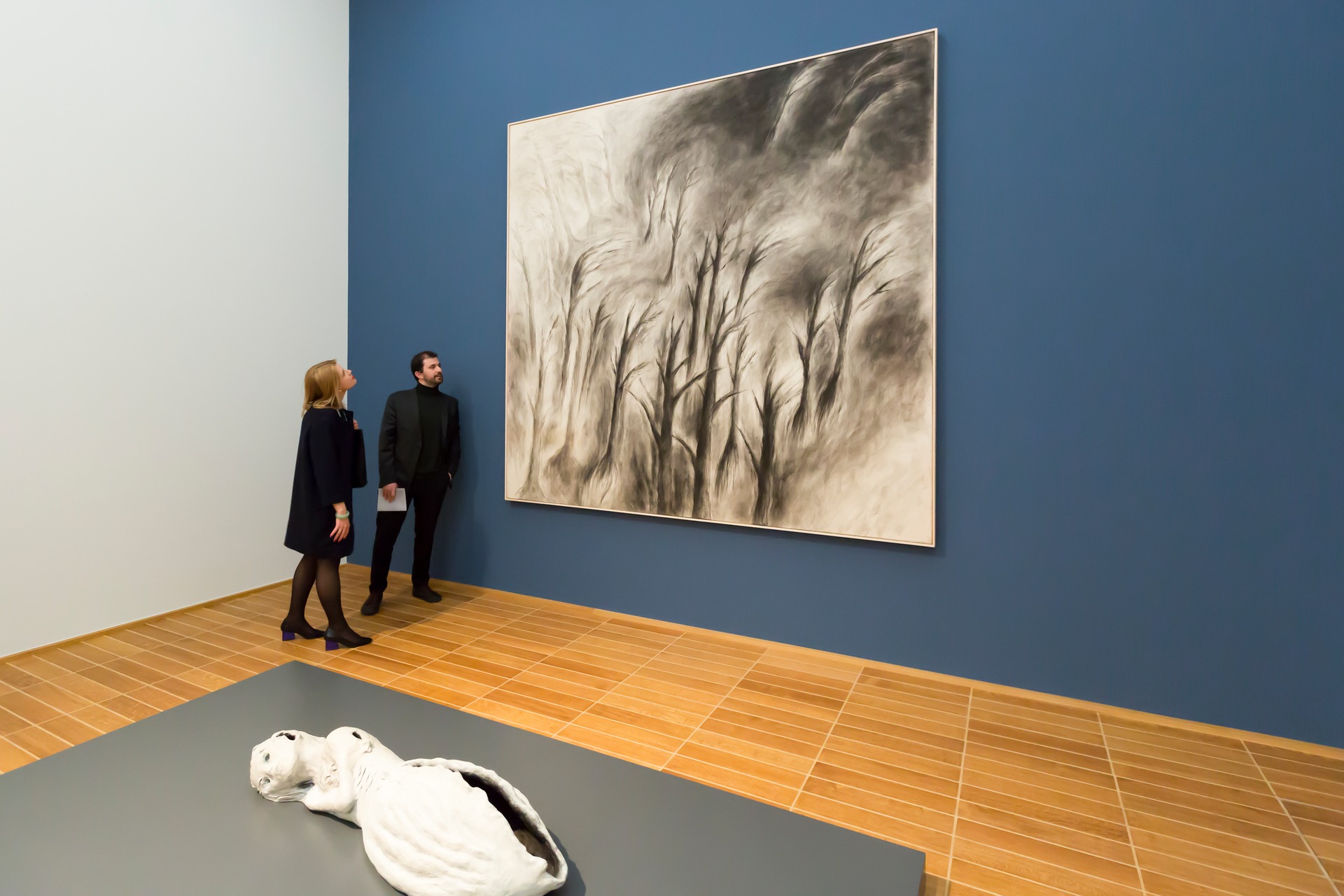Leiko Ikemura
Toward New Seas
11 May - 01 Sep 2019
The Japanese-Swiss artist Leiko Ikemura first caused a stir in Switzerland in the early 1980s with expressive and confrontational compositions that associated her with the Neue Wilde. She later rose to international renown with girlish figures unmoored from reality and cosmic landscapes populated by fabulous chimerical creatures. Japanese audiences celebrate her as an artist who wholeheartedly embraced Western art only to grow aware of her cultural roots and eventually forged a singular synthesis of both cultures.
Presenting drawings, paintings, and sculptures, the exhibition To new seas is a focused retrospective, mounted in consultation with the artist and in cooperation with the National Art Center, Tokyo.
Leiko Ikemura studied literature in Osaka and Spain before switching to painting and enrolling at the Escuela Superior de Bellas Artes in Seville in 1973. She subsequently lived in Zurich for several years; in the 1980s, she moved to Germany, where she still resides. In this first period of her oeuvre, she focuses on drawing, grappling with the challenges of devising an authentic creative idiom. Her art is propelled in part by a searching reflection on her own femininity and the attempt to carve out a place for her life as a woman between her native Japan and her adoptive home in Europe.
A stay in Grisons in 1989 inspired Ikemura to develop a novel visual vocabulary that ultimately led her to a fusion of body and landscape in the “Alpine Indians.” Then followed vaguely archaic hybrid creatures, which the artist increasingly also rendered in sculptures, and, in the 1990s, female figures hovering weightlessly at the horizon between earth and heaven, past and future, vulnerable and untouchable at once. In her most recent works, Ikemura conveys the melancholy yearning for an indivisible union between humankind and nature in oneiric landscapes of the soul. The phenomena of emergent form and metamorphosis gesture back toward the artist’s early oeuvre.
Through an insistent reflection on her life amid an alien culture, on solitude and the assimilation of new languages, Ikemura has staked out a domain of her own that allowed her to devise a personal and authentic synthesis of Japanese and European cultures. The “war goddess” of the early works has yielded to the “Amazon,” who exudes strength as well as composure.
Curator: Dr Anita Haldemann
Presenting drawings, paintings, and sculptures, the exhibition To new seas is a focused retrospective, mounted in consultation with the artist and in cooperation with the National Art Center, Tokyo.
Leiko Ikemura studied literature in Osaka and Spain before switching to painting and enrolling at the Escuela Superior de Bellas Artes in Seville in 1973. She subsequently lived in Zurich for several years; in the 1980s, she moved to Germany, where she still resides. In this first period of her oeuvre, she focuses on drawing, grappling with the challenges of devising an authentic creative idiom. Her art is propelled in part by a searching reflection on her own femininity and the attempt to carve out a place for her life as a woman between her native Japan and her adoptive home in Europe.
A stay in Grisons in 1989 inspired Ikemura to develop a novel visual vocabulary that ultimately led her to a fusion of body and landscape in the “Alpine Indians.” Then followed vaguely archaic hybrid creatures, which the artist increasingly also rendered in sculptures, and, in the 1990s, female figures hovering weightlessly at the horizon between earth and heaven, past and future, vulnerable and untouchable at once. In her most recent works, Ikemura conveys the melancholy yearning for an indivisible union between humankind and nature in oneiric landscapes of the soul. The phenomena of emergent form and metamorphosis gesture back toward the artist’s early oeuvre.
Through an insistent reflection on her life amid an alien culture, on solitude and the assimilation of new languages, Ikemura has staked out a domain of her own that allowed her to devise a personal and authentic synthesis of Japanese and European cultures. The “war goddess” of the early works has yielded to the “Amazon,” who exudes strength as well as composure.
Curator: Dr Anita Haldemann

